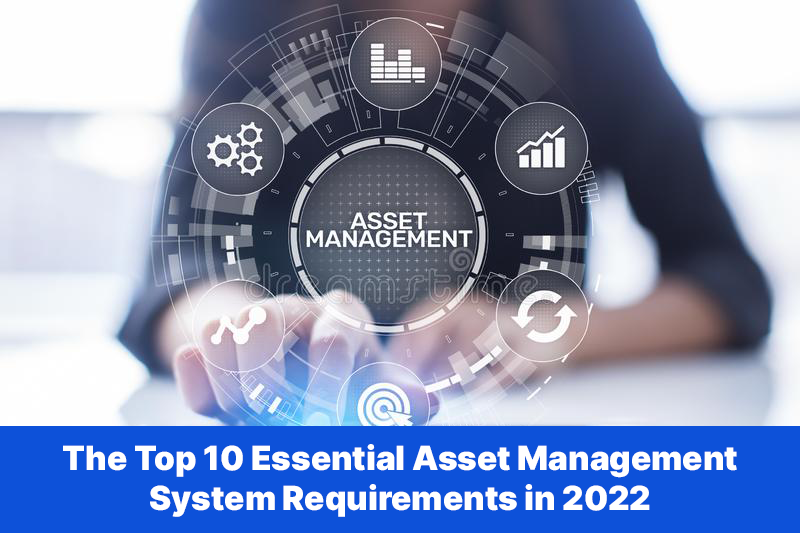The Top 10 Essential Asset Management System Requirements in 2022
Irioritizing the management of a company’s assets over all other management efforts is crucial. Businesses that deploy asset management systems more often see more benefits and ROI than ever. Over the years, the asset management system has enabled numerous businesses and companies to save significant money and administrative labor.
For regulatory compliance reasons, asset records are necessary for both physical and digital assets to support effective resource planning. The days of businesses maintaining manual asset management registers are long gone. The availability of several asset management software today helps companies keep track of their assets more effectively while saving time.
This blog will describe the top 10 IT asset management requirements and their importance.
Common Requirements of Asset Management System:
Asset management is the systematic process of efficiently managing the creation, use, upkeep, purchase, and disposal of assets. To determine which of your company’s assets should be used for the best profits, every manager must keep track of them.
Assets within a company typically fall into two types: current and fixed assets. Current assets can be quickly converted into cash in a short time, while non-current or fixed assets are acquired for long-term usage. Let’s look at the most common asset management system requirements:
Strategic Asset Management Plan:
A management action plan, or AMP, is a strategy created to manage one or more administrative assets or infrastructure. A systematic approach is necessary for an AMP because it is a component of the asset management system. It is true, particularly concerning numerous codependent assets that cooperate to fulfill a company’s asset management goals and provide a required level of service.
Asset management done right is the foundation of any flourishing company. Strategic asset management covers the following cases:
- Current performance.
- Level of service.
- Benefits and progress.
- Prepared activities.
- Potential upgrades in the future.
Asset Life Cycle:
An asset’s stages during its ownership tenure are referred to as the asset life cycle. The temporal span includes the asset’s acquisition, use, and eventual disposal. Using suitable systems, processes, and human resources in the right amounts is a clever method to increase value throughout an asset’s life cycle.
Plans for managing assets must adhere to minimum standards that specify what must be covered. It complies with many international standards and guidelines. Following are some typical components of an asset management plan:
- Service Level
- Practices of Managing Assets
- Asset Lifetime Assessment and Costing
- Forecast of Expenditure and Financial Flows.
- Strategies, Policies, and Plans.
- Physical description and classification of the resources of the company.
The most common requirements for any company in the asset management system are as follows:
- Automated Asset lifecycle management.
- Addition of an easy-to-use asset.
- Asset audits and physical verification.
- Simple Depreciation Calculation.
- Basic Asset Management for Financial Assets
- Personal Asset Tagging & Periodic Accuracy Scan.
- Planned preventive maintenance.
- Reporting on Asset Performance.
What Does the Asset Management System Do?
A strategy for managing assets can serve several purposes, including all kinds of assets that can be tracked using an asset management tool. Asset management software lets the company track physical and digital assets. Inventory, software, hardware, and other sorts of software can all be tracked using asset management software.
The software can track assets at every life cycle stage, from acquisition to disposal. The system helps to streamline the asset management process. Software installations, business services, papers, and documents can all be tracked in a single repository with an asset management system.
Implementing an asset management system often initiates the documentation of data about the company’s tangible and intangible assets. The data is employed to track asset locations and make sensible asset management choices.
Asset tracking, license compliance, and maintenance history are all covered by asset management systems. Utilizing the technology reduces the time and labor required to audit the assets. The contract data is a crucial part of the IT management system. Information such as licensing entitlements, version numbers, vendor SKUs, service levels, and other vital characteristics regarding assets are frequently acquired from the manufacturer or reseller.

